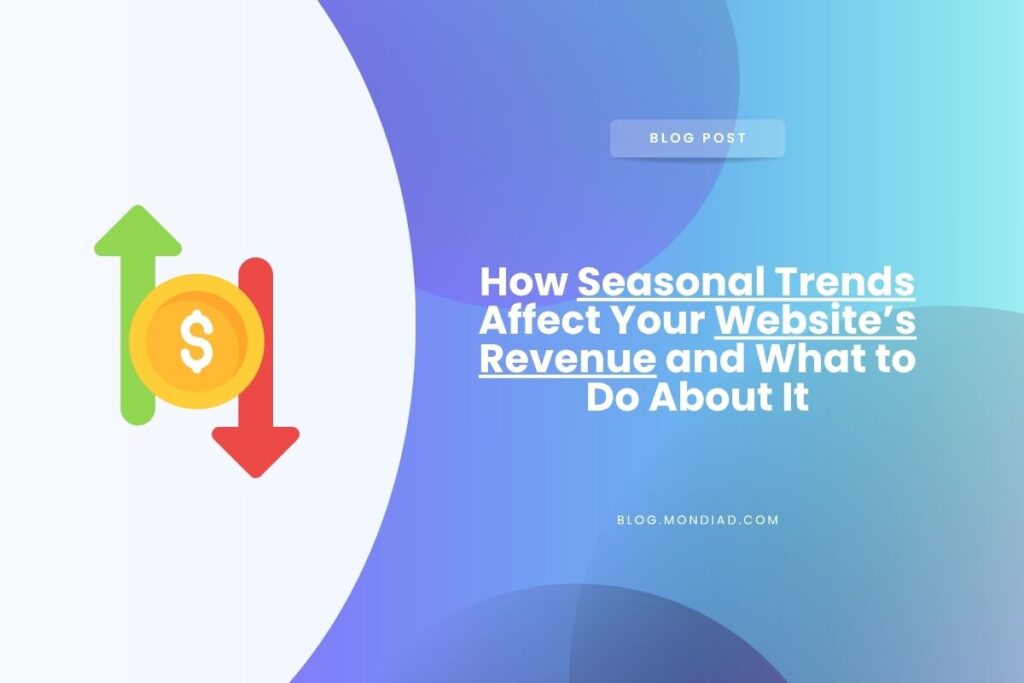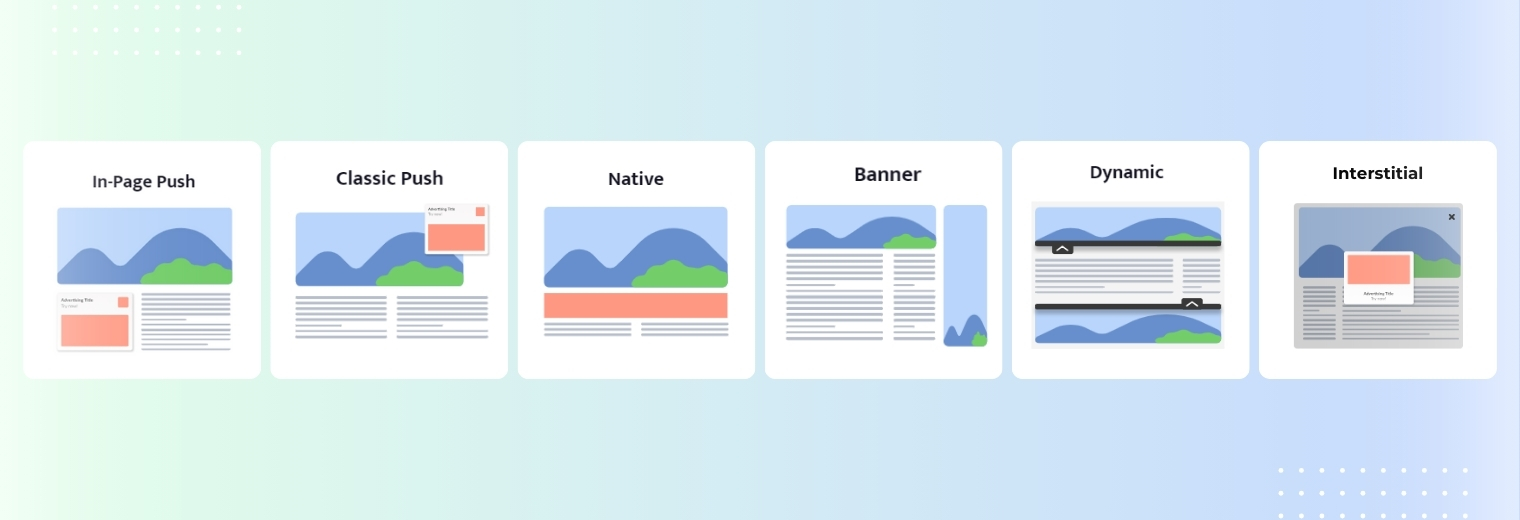If you’ve ever noticed your website revenue fluctuating at certain times of the year, you’re not alone. Seasonality plays a major role in the performance of ad monetization, and as a publisher, understanding these patterns can help you prepare for dips, and take full advantage of peaks.
In this post, we’ll break down how seasonal trends impact your revenue and what you can do to keep your earnings optimized year-round.
Why Does Revenue Drop During Certain Periods?
Advertisers adjust their budgets and strategies throughout the year based on user behavior, holidays, and business cycles. These shifts directly influence the demand for ad inventory and CPM/CPC rates, which means your earnings will naturally fluctuate.

Here are a few common seasonal patterns:
- Q1 Slowdown (January – March): After heavy Q4 spending, many advertisers cut back. Budgets are lower, and user buying intent decreases post-holiday.
- Summer Lull (July – August): Many users are on vacation, and engagement often dips, especially in B2B and desktop-heavy verticals.
- Holiday Peak (Q4, especially November – December): Advertisers ramp up for Black Friday, Cyber Monday, and holiday shopping. This is when CPMs and competition spike.
How Seasonal Peaks Can Boost Your Revenue
It’s not all bad news. Some periods offer incredible opportunities for publishers:
- Holiday Shopping Season: Brands spend big to reach shoppers. If you’re monetizing with formats like native ads, push notifications, or interstitials, this is your time to shine.
- Back-to-School (August – September): Depending on your vertical, this season brings higher demand from advertisers in education, tech, retail, and more.
- Spring Promotions (March – April): As consumers “wake up” from winter, spending increases in travel, fashion, fitness, and outdoor-related verticals.
What Publishers Can Do to Maximize Revenue Year-Round
Now that you understand the trends, here’s how to stay ahead:
1. Diversify Your Ad Formats
Not all formats perform equally across seasons. Try mixing push, native, pop, and banner ads to keep your monetization flexible.
For example:
- Use native ads during high-conversion seasons like Q4.
- Add push notifications to capture users even when they’re off-site.
2. Target High-Demand Geos
Some countries have different seasonality. While Q4 might be a high season in the US, other regions may peak at different times.
Talk to your Mondiad account manager about optimizing GEO targeting during dips.
3. Optimize User Engagement
During low-demand months, focus on improving user experience:
- Reduce bounce rate
- Increase time on site
- Improve page load speed
This helps improve fill rates and CPMs from premium advertisers even when demand is lower.
4. Stay Updated on Advertiser Trends
Your ad network may release seasonal campaigns or promos (e.g., Halloween, Black Friday, Valentine’s Day).
Participate actively, you’ll often receive higher CPMs for premium campaigns.
5. Test, Analyze, Repeat
Use reporting tools to track performance across different seasons.

Identify:
- Best-performing months and formats
- GEOs with rising eCPMs
- Underperforming placements to optimize or remove
Final Thoughts
Seasonal trends are inevitable, but they don’t have to hurt your bottom line. By understanding what’s behind the revenue changes and making strategic adjustments, you can ride the highs and minimize the lows.
At Mondiad, we’re here to support you every season. If you’re unsure how to navigate seasonal changes, reach out to our team or check your publisher dashboard for optimization tips and insights.
Need help maximizing your revenue this season?
Chat with our monetization experts today.


